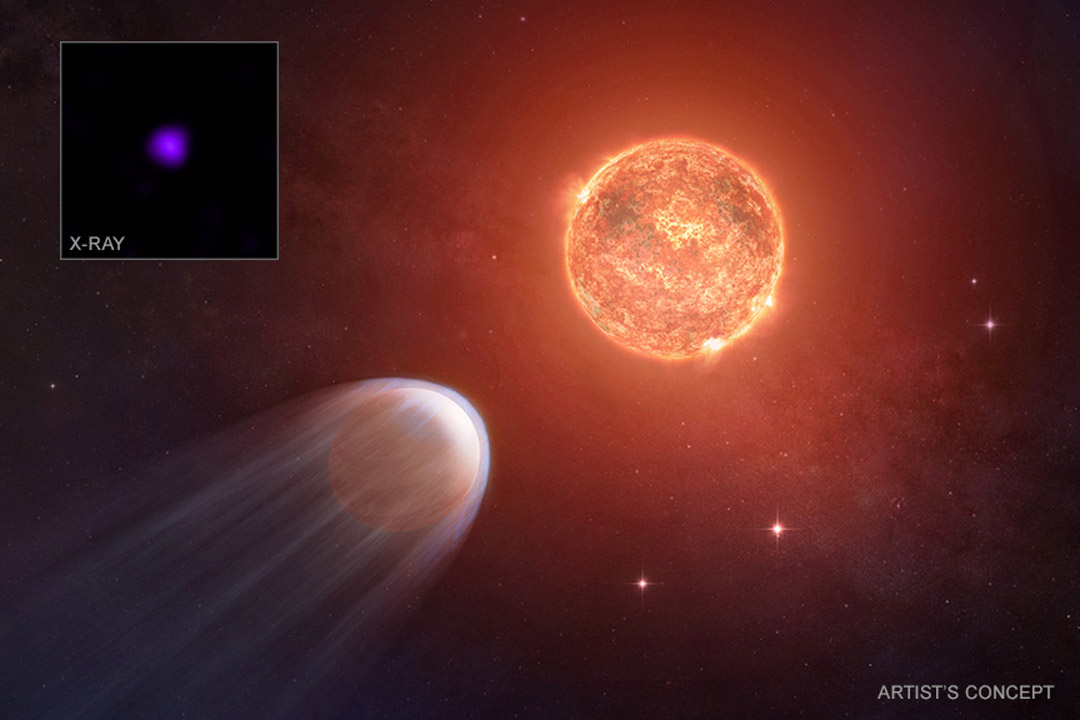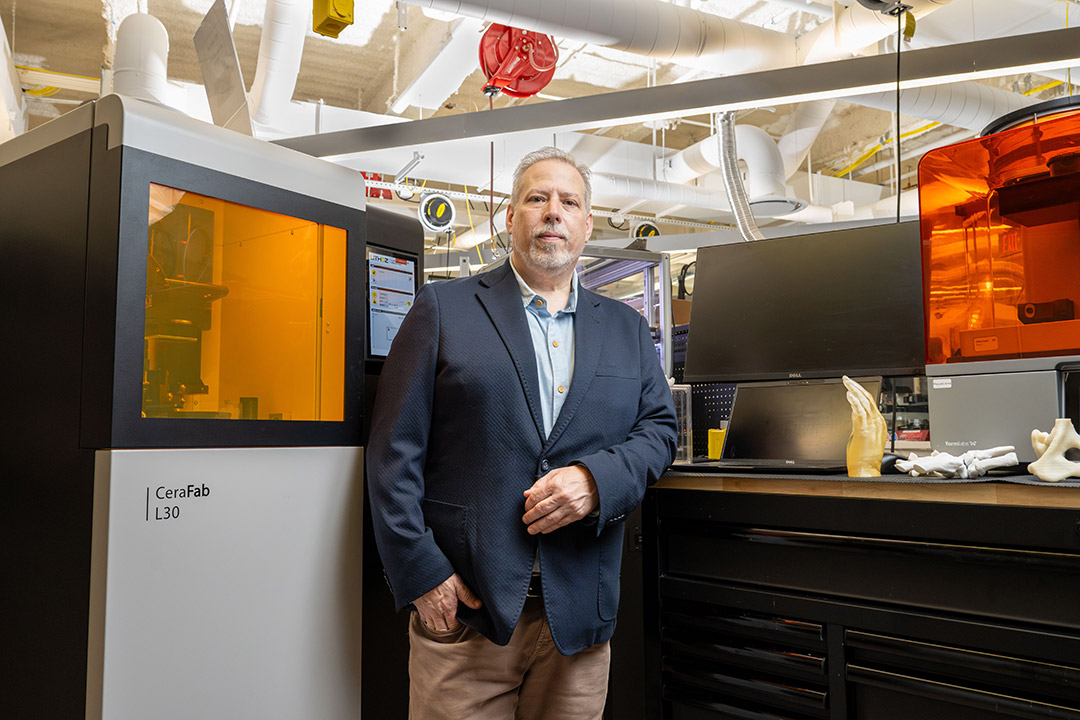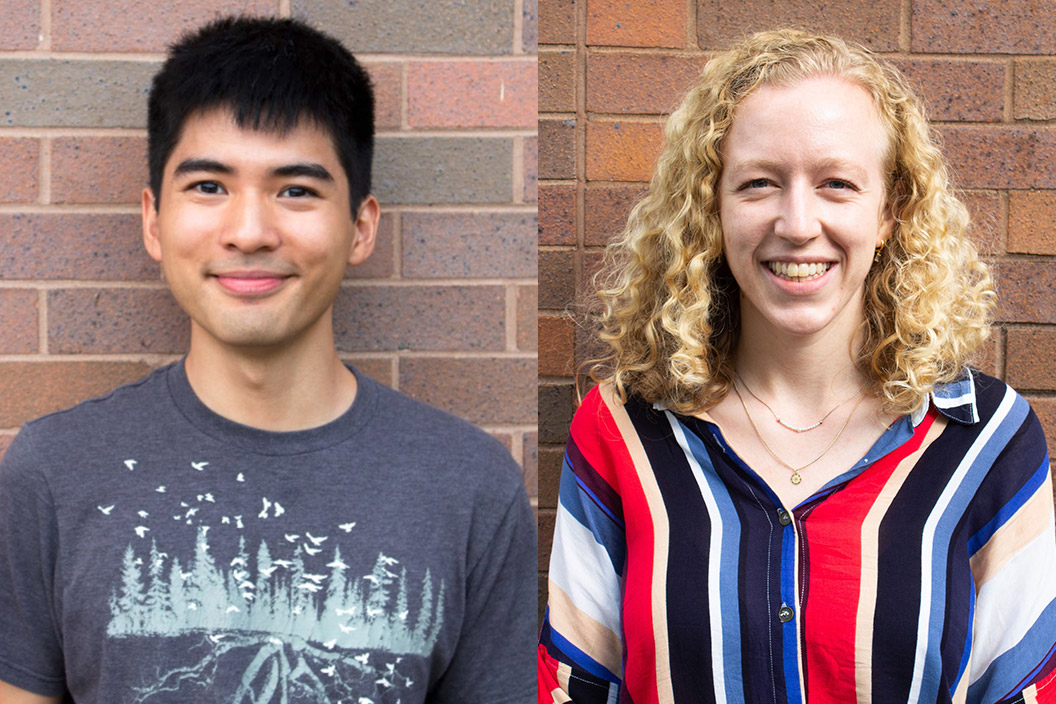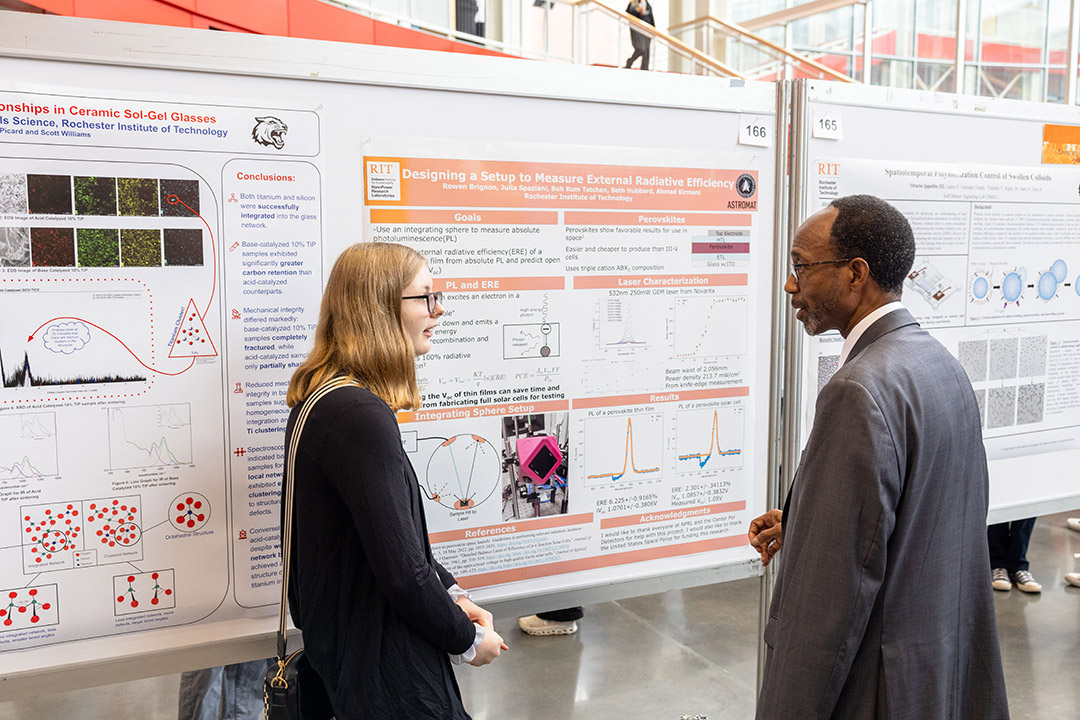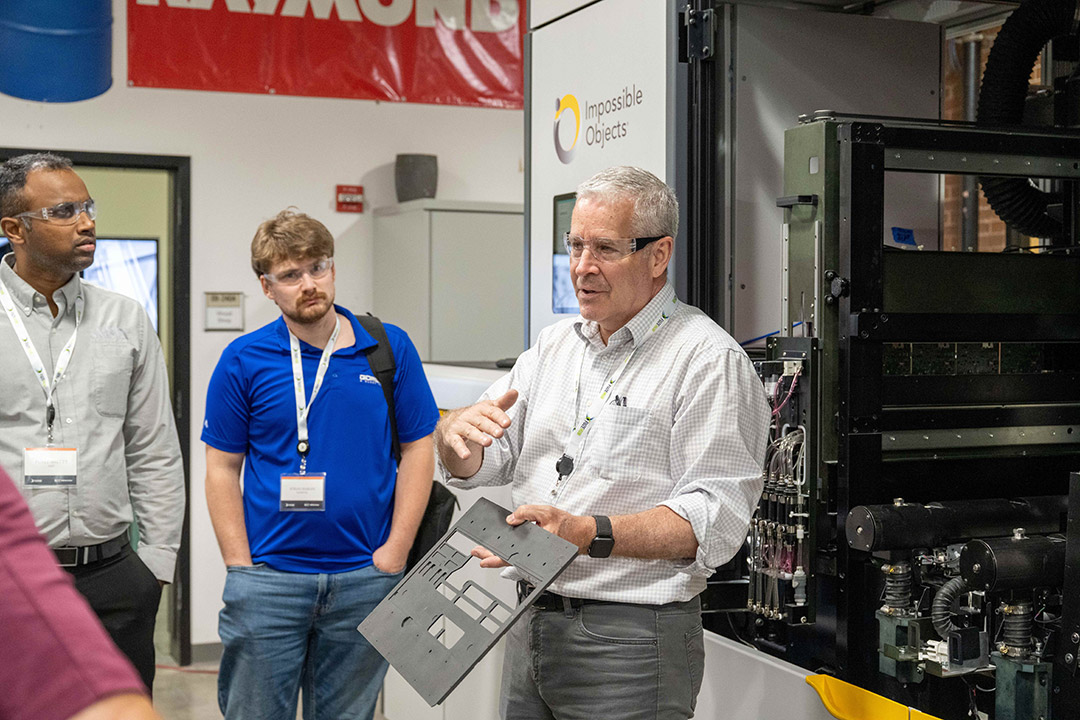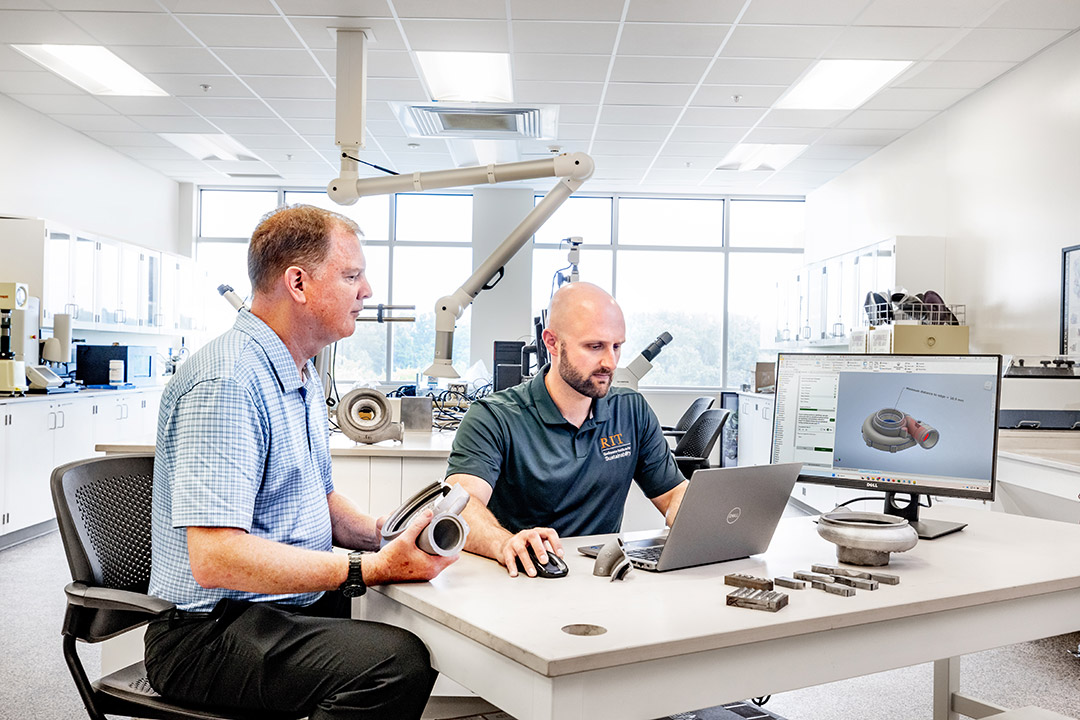Attila Varga is lead author of paper on a young, shrinking exoplanet using Chandra X-Ray Observatory
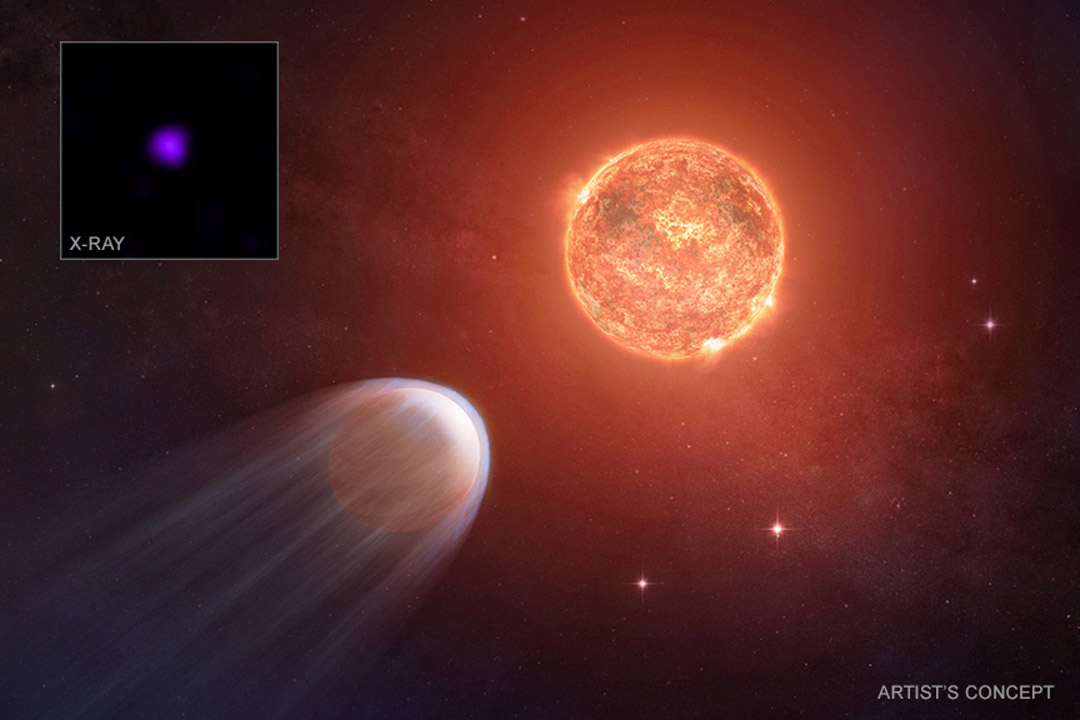
X-ray: NASA/CXC/RIT/A. Varga et al.; Illustration: NASA/CXC/SAO/M. Weiss; Image Processing: NASA/CXC/SAO/N. Wolk
An artist’s concept depicting the Jupiter-sized planet (lower left) around the faint, red star TOI 1227. Powerful X-rays from the star’s surface are tearing away the atmosphere of the planet, represented by the blue tail. The star’s X-rays may eventually completely remove the atmosphere. X-ray data from NASA’s Chandra X-ray Observatory is shown in the inset.
Like many Ph.D. students, Attila Varga’s professional pursuits include being a lead author on a published paper. But, getting his research featured on the front page of NASA’s website and in news outlets around the world is definitely a bonus.
Varga, a astrophysical sciences and technology Ph.D. candidate at RIT, is proud of his research that has led to new understanding about a newborn exoplanet that is shrinking due to the harsh X-rays of its nearby host star.
Named TOI 1227 b, the planet is the second youngest ever to be observed passing in front of its host star. While previous estimations put the planet’s age at 11 million years, Varga’s study found the planet to be 8 million years old, which is very young by planetary standards (by comparison, the Earth is about 5 billion years old).
The team’s research on TOI 1227 b began when Varga noticed that one of the young stars he had been studying, named TOI 1227, had been identified as a potential exoplanet host by a separate NASA mission. After the exoplanet was confirmed, the research team, led by Varga and his dissertation adviser Joel Kastner, professor in the School of Physics and Astronomy and Chester F. Carlson Center for Imaging Science, used NASA’s Chandra X-Ray Observatory to measure the star’s intense high-energy radiation. Varga then led a series of computer models that demonstrated that the effects of this intense stellar X-ray bombardment of the planet was probably devastating. TOI 1227 b’s atmosphere is being blasted away and its mass is due to shrink.
“It’s almost unfathomable to imagine what is happening to this planet,” said Varga. “The planet’s atmosphere simply cannot withstand the high X-ray dose it’s receiving from its star.”
Varga’s work on the effects of young star X-rays on their newborn planets will continue as he, fellow astrophysical sciences and technology Ph.D. student Ryan Butler, and adviser Kastner were recently awarded Chandra observing time to measure X-ray radiation from another exoplanet host star that is even younger than TOI 1227.
“When Attila told me that he had found an exoplanet host among the hundreds of young stars he had been studying, I have to say my jaw kind of dropped on the floor because it was such a significant discovery,” said Kastner. “You can learn a lot by looking at these very young planets to determine how our solar system came to be and if there are other solar systems like ours.”
Along with Varga and Kastner, other collaborators on the paper published in The Astrophysical Journal include Alexander Binks from Eberhard Karls University of Tubingen in Germany, Moritz Guenther from Massachusetts Institute of Technology, and Simon Murphy from The University of New South Wales in Australia.
The opportunity to work with researchers around the world and to have direct access to NASA telescopes like Chandra was what helped bring Varga to RIT.
“I really like the research when the focus is X-ray astronomy,” said Varga. “It was really cool that we could propose time with Chandra and get the data back, and have such definite measurement of this young exoplanet host star’s X-ray radiation. It’s exciting, and it puts all the work in my classes and experience I’ve been getting together really nicely.”
For Kastner, supervising a Ph.D. student making such discoveries is just as rewarding.
“Seeing him get to the place where he’s making major advances in exoplanet research with data collected from a major international observatory is wonderful,” said Kastner. “Even better, he’s done so by taking the research initiative and leading an international team of recognized experts in the field.”



